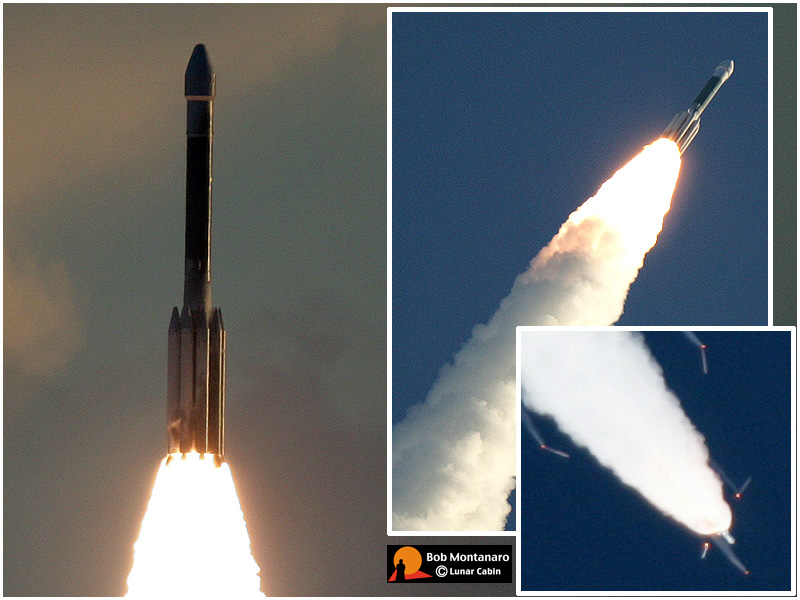 |
|
 |
|
A Delta 2 rocket carrying the Dawn spacecraft lifts off at 7:34 a.m. on 27 September 2007 from Cape Canaveral Air Force Station after a fourteen minute delay caused by a boat trespassing into the solid rocket booster impact zone offshore. The first two images clockwise from left show the liftoff and the climb skyward into the Sun while the bottom right image shows the ground-lit solid rocket boosters falling away like so many lit cigarettes. This unique mission is described in excerpts from NASA press releases: The Dawn spacecraft will venture into the heart of the asteroid belt, where it will document in exceptional detail the mammoth rocky asteroid Vesta, then the even bigger, icy dwarf planet Ceres. Following launch from Cape Canaveral Air Force Station, Fla., on a conventional rocket, the Dawn spacecraft will use ion propulsion periodically for four years to take it to its first destination, the asteroid Vesta, in 2011. After up to nine months in orbit there, Dawn will depart for a nearly three-year cruise to the dwarf planet Ceres, where it will arrive in 2015. Dawn will spend five months in orbit at Ceres. The spacecraft will be the first ever to orbit one extraterrestrial body, depart, and then orbit a second body. "Visiting both Vesta and Ceres enables a study in extraterrestrial contrasts," said Dawn Principal Investigator Christopher Russell of the University of California, Los Angeles. "One is rocky and is representative of the building blocks that constructed the planets of the inner solar system. The other may very well be icy and represents the outer planets. Yet, these two very diverse bodies reside in essentially the same neighborhood. It is one of the mysteries Dawn hopes to solve." |
|
All contents copyright Lunar Cabin |
|